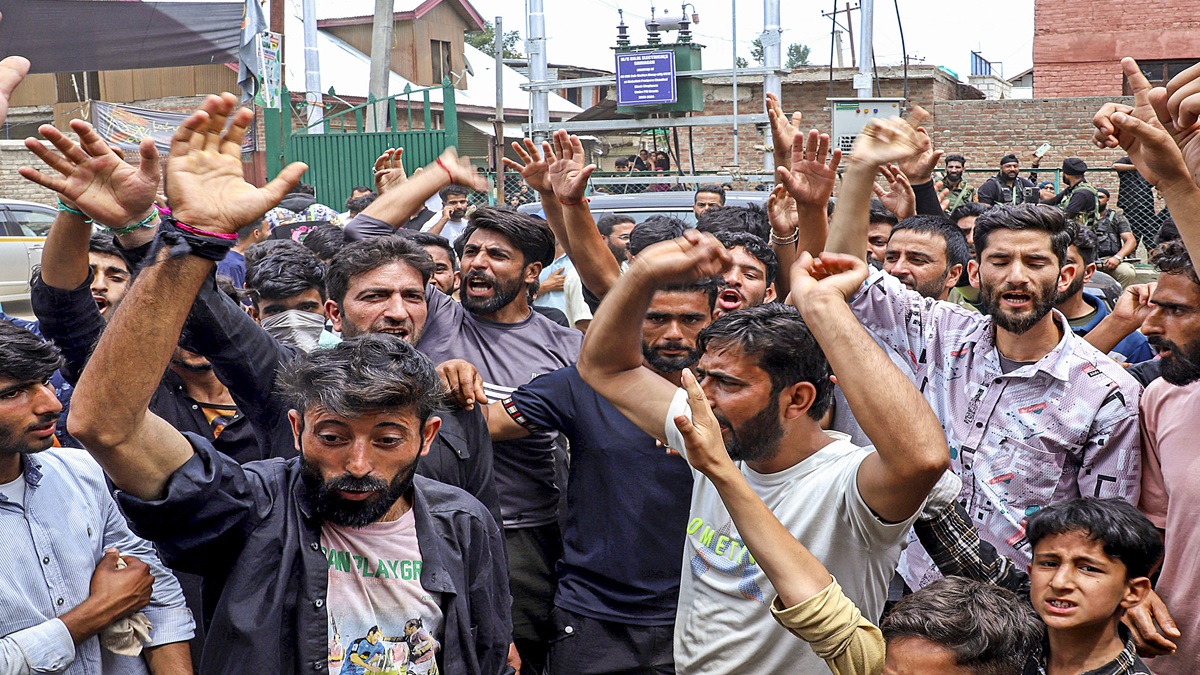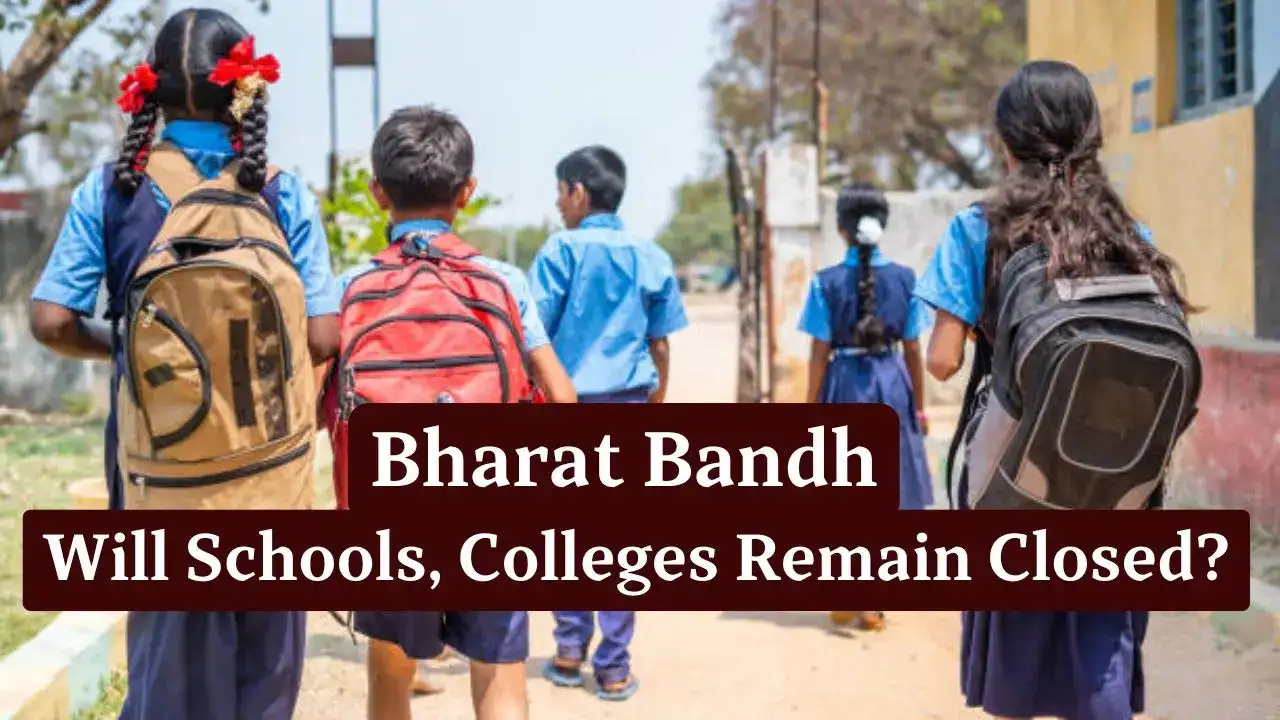1. India Braces for Nationwide Bharat Bandh on July 9, 2025
India is poised for a significant nationwide general strike, commonly known as ‘Bharat Bandh’, scheduled for Wednesday, July 9, 2025. This large-scale protest has been initiated by a joint platform comprising 10 central trade unions, operating in close coordination with various farmers’ and rural workers’ organizations, including the prominent Samyukta Kisan Morcha.
Organizers are anticipating a massive participation, with projections indicating that over 25 crore (250 million) workers from diverse sectors across the country are expected to join the strike. This widespread involvement is set to significantly impact public life throughout India on the designated day. The sheer scale of this anticipated participation, involving hundreds of millions of individuals, points to a profound level of dissatisfaction and a formidable organizational capacity among the protesting bodies. Such a broad-based movement suggests that the grievances driving the protest are not isolated but resonate deeply across a vast segment of the workforce and agricultural community.

This collective action highlights the powerful influence these groups can exert on national operations and public discourse, elevating the Bandh from a localized protest to a major national event with potential implications for labor relations and the broader economic policy landscape.
2. Why the Call for a Bharat Bandh? Understanding the Core Grievances

The central theme of the upcoming Bharat Bandh is a resolute opposition to government policies that are widely perceived as favoring corporate interests at the expense of the welfare and rights of workers and farmers. This consistent framing of policies as “anti-worker, anti-farmer, and pro-corporate” is more than a mere description; it serves as a deliberate and strategic narrative. By employing this specific phrasing, the unions aim to distill complex policy issues into a clear ideological conflict, thereby unifying diverse protest groups and seeking to garner broader public sympathy. This approach positions the government as serving narrow corporate interests over the collective public welfare, a critical element in mobilizing such a vast number of participants.
At the heart of the protest lie 17 long-standing demands that trade unions assert the government has consistently failed to address effectively. A significant point of contention is the government’s failure to convene the Indian Labour Conference for a decade. This absence of formal dialogue with labor representatives is seen as a clear indication of the government’s disregard for workers’ concerns.
Furthermore, unions have voiced strong objections to the four labour codes enacted by Parliament. They contend that these legislations systematically weaken workers’ rights, dilute the power of trade unions, extend working hours, and decriminalize employer violations. These changes are viewed as a deliberate attempt to favor employers under the guise of promoting ‘ease of doing business’, further eroding the protections and collective bargaining capabilities of the labor force.
Another major grievance is the ongoing privatization of public assets and services. A particularly contentious example cited is the planned privatization of power distribution companies in Uttar Pradesh, which has prompted over 27 lakh (2.7 million) power sector employees to join the strike. This specific instance underscores the direct and tangible impact of privatization policies on employment security and worker conditions. Beyond these points, broader economic concerns include the government’s alleged negligence towards demands for increased recruitment and better wages.
Protesters also criticize the government’s focus on offering benefits to employers through schemes like Employment Linked Incentive (ELI) instead of prioritizing solutions for widespread youth unemployment. Farmers, too, are protesting against economic decisions that they claim are worsening unemployment and contributing to rising prices.
3. Services Likely to Be Affected: What to Expect on July 9
The nationwide strike on July 9, 2025, is anticipated to cause disruptions across several key sectors. Citizens are strongly advised to anticipate potential delays and plan their day accordingly.
The targeted disruption of specific sectors, while largely sparing emergency services and private businesses, reflects a strategic approach by the unions. This strategy aims to maximize economic pressure and draw public attention to their demands without completely paralyzing essential, life-sustaining services. This calculated balance is crucial for maintaining public sympathy and avoiding severe backlash, thereby upholding the perceived legitimacy of the protest.
Key sectors likely to experience an impact include:
- Banking and Financial Services: Public sector and cooperative banks are expected to face significant disruptions due to high participation from union members.
- Postal Services: Operations within postal departments are also likely to be affected.
- Coal Mining and Factories: Coal mines and various industrial factories are expected to face operational hurdles.
- State Transport: State transport networks across various states are anticipated to be impacted. This could lead to road-based travel delays, potentially exacerbated by rallies and roadblocks.
- Insurance, Highways, and Construction: These sectors, benefiting from substantial union support, are also likely to experience disruptions.
- Public Sector Enterprises: Unions representing various public sector enterprises, including the steel sector, non-coal minerals, and numerous state government departments, have announced their participation.
Bharat Bandh 2025: Services Expected to Be Affected vs. Unaffected

| Service Category | Status on July 9, 2025 | Details/Notes |
| Banking Operations | Likely Disrupted | Particularly public sector and cooperative banks. |
| Postal Services | Likely Disrupted | Expect operational hurdles. |
| Coal Mining & Factories | Likely Disrupted | Operational hurdles expected. |
| State Transport | Likely Disrupted | Road-based travel delays due to rallies/roadblocks. |
| Insurance | Likely Disrupted | Significant union support. |
| Highways & Construction | Likely Disrupted | Significant union support. |
| Public Sector Enterprises | Likely Disrupted | Including steel, non-coal minerals, state government departments. |
| Schools/Colleges | Expected to Operate Normally | No official closure notification, but transport delays possible. |
| Government Offices | Expected to Operate Normally | No official closure notification, but transport delays possible. |
| Hospitals/Emergency Services | Expected to Operate Normally | Will continue to function normally. |
| Metro Services | Expected to Operate Normally | Largely unaffected. |
| Air Travel | Expected to Operate Normally | Largely unaffected. |
| Internet/Mobile Networks | Expected to Operate Normally | Will continue to function normally. |
4. What Remains Open on Bharat Bandh? Schools, Offices, and Emergency Services
Despite the anticipated scale of the strike, no official notification has been issued regarding the closure of schools, colleges, or government offices. These institutions are generally expected to remain open on July 9, 2025.
However, due to the likely disruptions in public transport, students, teachers, and office-goers may experience significant delays in their daily commute. Parents and students are strongly advised to monitor local updates closely and plan their travel arrangements accordingly. Similarly, private offices and businesses are also expected to operate as usual, unless they are directly impacted by localized transport issues or specific circumstances within their immediate area.
Crucially, essential and critical services are expected to continue functioning normally. Hospitals, emergency services, internet, and mobile networks are anticipated to remain operational. Metro services and air travel are also expected to be largely unaffected by the nationwide strike.
The reasons behind this extensive Bharat Bandh are rooted in a series of grievances, including the government’s alleged failure to hold the Indian Labour Conference, strong objections to the four new labor codes, and concerns over the privatization of public assets. As a result, banking and financial services, public transport, and postal services are among those expected to be significantly affected by the Bharat Bandh. Travelers are strongly advised to check local advisories and plan their journeys carefully to mitigate the impact of this nationwide shutdown.
5. The Bihar Factor: An Added Layer of Regional Disruption for Bharat Bandh
In the state of Bihar, the situation on July 9, 2025, could be further intensified by a separate ‘bandh’ declared on the same day by the INDIA Bloc. This regional protest is distinct from the nationwide Bharat Bandh, as its primary reason is opposition to a controversial voter list revision. The INDIA Bloc alleges that this revision could potentially disenfranchise nearly 20% of the electorate, particularly those from marginalized communities.
This additional protest, driven by distinct political grievances, is expected to intensify disruptions specifically within Bihar, adding another layer of complexity to the day’s events in the state. The concurrent, yet distinct, nature of these protests creates a unique “double pressure” scenario for the Bihar state government. When a national economic and labor protest converges with a regional political demonstration on the same day, their combined impact is likely to be greater than the sum of their individual parts. This convergence could lead to disproportionately higher disruption and political volatility in Bihar compared to other states, highlighting how national events can be significantly amplified by specific local political dynamics.
On July 9, 2025, India will experience a significant disruption as a joint platform of 10 central trade unions, supported by various farmers’ and rural workers’ organizations, has called for a nationwide “Bharat Bandh.” This Bharat Bandh aims to protest the central government’s policies, which they categorize as “anti-worker, anti-farmer, and pro-corporate.” With over 25 crore workers anticipated to join, the impact of this Bharat Bandh will be widespread across several key sectors, leading to potential delays and cancellations in public services.
6. Historical Context and What This Means for India
The upcoming Bharat Bandh is not an isolated incident but rather part of a recurring pattern of labor and farmer unrest against government policies. Trade unions have organized similar nationwide strikes in the past, with notable instances occurring on November 26, 2020, March 28-29, 2022, and February 16, 2023.

This history of repeated nationwide strikes indicates that the underlying issues are systemic and persistent, rather than merely isolated incidents. The recurrence suggests that the fundamental demands and grievances of the trade unions and farmer organizations—concerning aspects like labor codes, privatization, and the perceived lack of meaningful dialogue—have not been adequately addressed by the government over time. This pattern points to an entrenched conflict or a deep ideological divide between the government’s economic agenda and the interests represented by the protesting groups, reflecting a structural tension in India’s political economy regarding economic reforms and social welfare.
Organizers believe that this upcoming strike could be one of the largest yet, both in terms of participant numbers and its potential impact. As the date approaches, the protest is set to become a major focal point in the ongoing national debate concerning crucial issues such as labor rights, job creation, economic justice, and the overall direction of government policy in India. The claim that this strike could be the “largest yet,” when viewed against the backdrop of past protests, further suggests that these long-standing issues are intensifying rather than subsiding, potentially leading to continued social unrest and governance challenges in the future.
7. Advice for the Public: Preparing for July 9
To navigate the potential disruptions on July 9, citizens are strongly advised to stay informed by monitoring local news channels and official announcements for any last-minute updates. It is particularly important to watch for information regarding school closures or changes in public transport schedules, as participation levels and local circumstances can lead to regional variations in impact.
Given the high likelihood of public transport disruptions and road delays, individuals should plan their travel well in advance. Considering alternative routes or adjusting commute timings for July 9 is recommended to mitigate potential inconvenience. Furthermore, those needing to conduct urgent banking or postal transactions should consider completing them before July 9 to avoid any potential operational hurdles and ensure their transactions are processed without delay.
Sources: Times of India , Hindustan Times
for more updates visit: The Morning Draft

